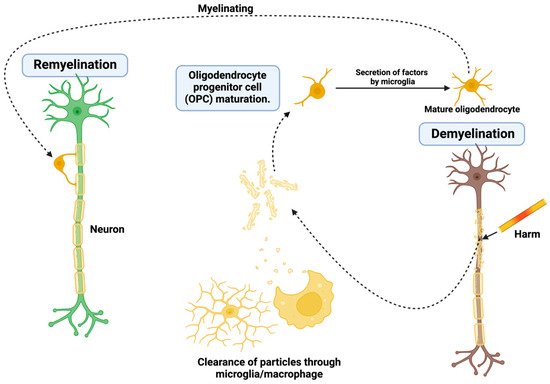Researchers say that early diagnosis is one of the hardest parts of managing traumatic spinal cord injuries. Traditional assessments rely heavily on patient responsiveness, which is often unreliable in the first hours after an accident. Now, a new study suggests that artificial intelligence (AI) could change the way clinicians approach these life-altering conditions. By analyzing routine blood tests, AI models can predict recovery chances, injury severity, and even survival outcomes within days of hospital admission.
The Challenge of Predicting Recovery
Spinal cord injuries (SCI) are complex, with outcomes ranging from full recovery to lifelong paralysis. Each year, the World Health Organization (WHO) estimates that between 250,000 and 500,000 people worldwide suffer such injuries. Treatment is expensive, and recovery trajectories vary widely depending on the nature of the trauma, the patient’s age, and access to specialized care.
In emergency departments and intensive care units, medical teams often struggle to predict outcomes early. Neurological exams are a gold standard, but they depend on the patient’s ability to respond — something not always possible if the patient is sedated, unconscious, or has other injuries. This uncertainty complicates treatment decisions and resource allocation.
How AI Turns Blood Into a Prognostic Tool
The study, conducted by researchers at the University of Waterloo, Canada, tackled this issue using machine learning. They analyzed data from over 2,600 patients in the U.S., focusing on routine blood tests performed during the first three weeks after injury. These included standard measures like electrolytes, white blood cell counts, and other metabolic markers — tests that are already available in nearly every hospital worldwide.
By processing millions of data points, AI algorithms identified hidden patterns that correlated strongly with recovery outcomes. Remarkably, these models were able to predict mortality and injury severity as early as one to three days after admission, outperforming many of the traditional severity assessments used in hospitals today.
The predictive accuracy improved further as more blood test data accumulated over time, suggesting that AI-powered monitoring could provide clinicians with a dynamic, evolving picture of patient recovery.
Why This Matters for Hospitals
Advanced diagnostic tools like MRI scans and molecular biomarkers can also provide insights into spinal cord injuries. However, these are expensive, not universally available, and often require specialized equipment. In contrast, routine blood tests are inexpensive, universally conducted, and standardized across healthcare systems.
This makes the AI-driven approach scalable. Hospitals in both high-income and low-resource settings could benefit from the same predictive models, potentially democratizing access to better clinical decision-making tools.
For intensive care units (ICUs), this could be transformative. Doctors could prioritize patients for surgery, rehabilitation, or advanced interventions based not on uncertain neurological exams but on solid, data-driven forecasts. Resource allocation — from staffing to equipment — could be managed with greater confidence.
A Potential Lifeline for Patients and Families
For patients and their families, clearer predictions could provide much-needed guidance. Spinal cord injuries often create uncertainty about long-term care, financial planning, and psychological adjustment. Early, data-backed insights could help families prepare for the road ahead, whether that means intensive rehabilitation or adjusting to permanent disability.
Moreover, this tool could help reduce disparities in care. Many hospitals without advanced imaging facilities could still provide accurate prognoses using blood test-based AI systems. That could be especially critical in regions where rehabilitation programs are limited and healthcare budgets are stretched.
Balancing Promise With Caution
While the findings are promising, experts stress that AI should complement, not replace, clinical expertise. Algorithms can reveal correlations, but doctors still need to interpret results in the context of each patient’s broader medical profile.
Ethical considerations also loom large. Predictive models could influence critical decisions, such as whether to continue intensive treatment. Ensuring transparency in how AI systems reach conclusions will be essential. Researchers emphasize the importance of rigorous validation across diverse populations to prevent biases that could disadvantage certain patient groups.
The Next Steps in Research
The work published in npj Digital Medicine is an early step in what could become a global shift in spinal cord injury care. Future studies will likely explore how these AI models perform across different healthcare systems, patient demographics, and types of trauma.
There’s also potential to combine AI blood test analysis with other emerging technologies, such as wearable sensors and genomic data, creating multi-layered prognostic tools. Integrating these systems into electronic health records could give clinicians real-time dashboards that evolve with each new test result.
Global Implications for Critical Care
If adopted widely, AI-enhanced blood test analysis could expand beyond spinal cord injuries. Many conditions — including stroke, traumatic brain injury, and sepsis — involve complex recovery patterns that might also be illuminated through routine lab work. The principle is simple: the body leaves biochemical fingerprints in the blood, and AI can detect patterns invisible to the human eye.
The economic impact could also be significant. In the U.S., the lifetime cost of spinal cord injuries is estimated to exceed $1 million per patient for those with severe paralysis. By improving early decision-making, AI-driven blood analysis could reduce unnecessary treatments, shorten hospital stays, and direct resources to interventions with the highest likelihood of success.
Toward a New Standard of Care
The study from the University of Waterloo represents more than a technical breakthrough. It signals a shift toward more equitable, efficient, and predictive healthcare. By turning an everyday diagnostic tool into a powerful forecasting engine, researchers may have opened a path to improve survival rates and long-term outcomes for thousands of patients worldwide.
The vision is clear: a future where routine blood samples don’t just reveal present health conditions but also predict recovery possibilities with remarkable precision. In the high-stakes environment of emergency medicine, that could mean the difference between uncertainty and clarity — and in many cases, between life and death.
